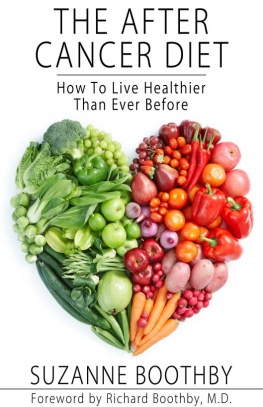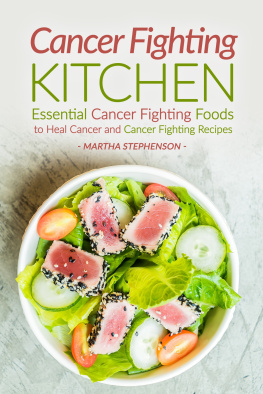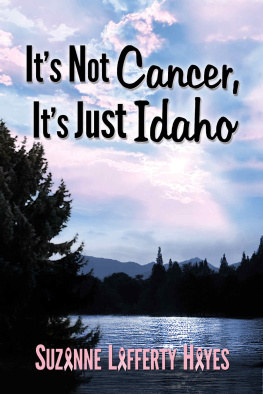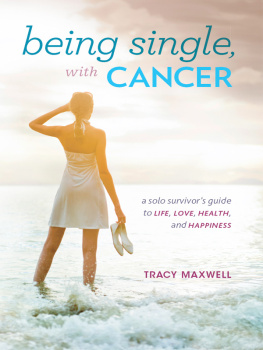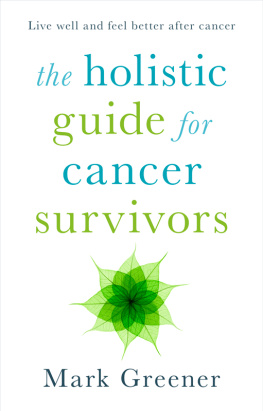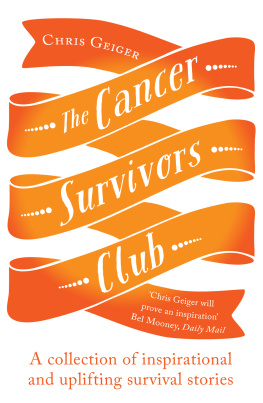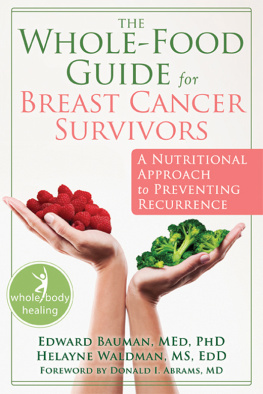The After CancerDiet:
How to Live Healthier Than EverBefore
by Suzanne Boothby, H.C. with Richard Boothby,M.D.
Diversion Books
A Division of Diversion Publishing Corp.
80 Fifth Avenue, Suite 1101
New York, New York 10011
www.DiversionBooks.com
Copyright 2011 by Suzanne Boothby
All rights reserved, including the right to reproducethis book or portions thereof in any form whatsoever.
For more information, emailinfo@diversionbooks.com.
First Diversion Books edition September 2011
ISBN: 978-0-9838395-5-2 (ebook)
1 3 5 7 9 10 8 6 4 2
Table of Contents
Bonus:
This book is dedicatedto:
My Nana,
who was the funniest and mostmagical person I have ever met
The MedicalProfessionals,
who work with courage andcompassion to help their patients
The Alternative Healers
who also work with courage andcompassion to help their patients
May we all work together to createa cancer-free world.
Foreword by Richard Boothby, M.D.
I have been caring for cancer patients forthe past 26 years. I have seen such a dramatic change in all thetreatments and outcome of patients during that time from about themid 1980s to the present.
Early in my career, I watched most of mypatients die from their cancer. Now, most survive. There are nowmore than 11 million cancer survivors living in the United States,up from about 3 million in 1971. Advances in the ways cancer isdiagnosed and treated have increased the number of people who livedisease-free for longer periods of time.
While I have become skilled at prescribingthe right combination of surgery, chemotherapy and radiation forpatients, I felt a void in my training for what to offer patientsafter active treatment. I noticed that most patients felt letdownafter they finished active treatment because they felt we (andthey) weren't doing anything except checking in periodically andwaiting for the cancer to return. I knew this needed to change.
I personally became more interested innutrition as a means to stay healthy and avoid illness. Manydoctors spend so many years caring for others, they neglect theirown health and well-being. I spent years sleeping too little andsurviving on hospital foods that were convenient but notnecessarily healthy.
My daughter, Suzanne, introduced me to theInstitute for Integrative Nutrition in New York after she had takenthe classes and worked there for many years. The school helped meconnect the dots with many of my own health issues. I started toexperiment with eating new foods and letting go of certain habitsthat drained me. As my diet became healthier, I felt better, and Iknew that my patients could easily do the same to feel better andmaintain health during and after treatment. As my year of nutritionstudy continued, I further discovered how very simple dietarychanges could help my patients feel better and use less medicine.This way of living is simple, easy to learn and can be duplicatedanywhere on the planet.
As I learn more about integrative medicine, Irealize theres so much more I can offer my patients in addition tosurgery and chemotherapy. Its my hope that this book can furtherthat conversation and become a starting point for new ways to enjoyour health.
Introduction
Ive never had cancer. But like many peopletoday, my life has been profoundly affected by it.
My dad has worked as a cancer physician (agynecological oncologist) my whole life, so Ive known about cancersince I was very young. When I was growing up, my dad rarely talkedabout his work but I could see when he was having tough days.Sometimes I would ask him why he was so quiet and he would tell mehe had lost a patient that day. Most of his patients were older,but as the years went on, many were younger and sometimes the sameage as me. They were moms, wives, career women, stay-at-home women,women with big families, single women, you name it. It takes areally special person to work with cancer on a daily basis and mydad is one of those people.
Despite my dads day-to-day work, the onlytime Ive ever seen him cry was the day my Nana (his mom) died oflung cancer. My Nana was the funniest person I have ever met. Wehad a secret club where we would make pancakes early on Saturdaymornings and throw the ones we didnt eat on the ceiling. One day Inoticed the chess pieces on her set were naked, so she encouragedme to create costumes for them. She kept those costumes on thechess players for as long as I knew her. Nana was an art teacherand a potter. She had a kiln in her garage and would help me glazeand fire up any clay creations I made. She was so encouraging of mycreative pursuits. She was also a vegetarian. She used to take meto McDonalds, order a cheeseburger and ask them to hold the meat.I thought she was crazy, but it was always fun to see what Nanawould do next.
She died about a month after she wasdiagnosed with lung cancer. I was 12 years old at the time. I neverknew she smoked. She never smoked in front of me or anyone in thefamily. It came out later that she used to sneak one cigarette anight the whole time I knew her. She was always full of surprises.She seemed like such a healthy, vibrant person to me. She exercisedand ate well (except for the occasional McDonalds visit).
Losing her to cancer had a huge impact on mylife. When most kids were starting to experiment with smokingcigarettes, I stayed out of that scene. I stopped drinking sodaaround that time, opting for water and juice. I questioned fastfood and started eating less and less of it. I eventually dabbledin many different types of diets like macrobiotics; raw food;Ayurveda; high carb, low-fat diets; gluten-free living, and more.One of my first big stories as a journalism student in college wasabout the cafeteria food choices and I continued my interest infood and health studying at Integrative Nutrition as an adult.
Early in 2011, my aunt (my moms sister) wasdiagnosed with Stage 4 breast cancer. She is a healthy, vibrantmother of two amazing girls and not quite menopausalshe seems avery unlikely candidate for cancer. My first instinct was to helpwith her diet. As a wellness writer and health coach, I knew Icould guide her to avoid cancer-causing foods like sugar andincrease her bodys ability to fight cancer with enzyme-rich greendrinks and more organic food. She was a bit resistant at first tomany new foods, but little by little, she came around. Shesmaintained an amazing can-do attitude throughout her treatment.
Thankfully for most people diagnosed withcancer today, the trend is survival. Even in the world of elitecelebrities, you can find many people who have survived theircancer: Sheryl Crow (breast), Robert De Niro (prostate), FranDrescher (uterine), Michael Douglas (throat), Olivia Newton-John(breast), Kathy Bates (ovarian).
As a journalist, Ive been trained to lookfor trends and report on them. I met a woman in a class thatreferred to herself as a cancer thriver. Thrive means to prosper orflourish and I know thats how many cancer survivors want todescribe their recovery and life after cancer.
The idea for the book came from conversationswith my dad and both of us seeing a gap of information. My originalintention was to write a guide for his patients, but as Iencountered more and more cancer thrivers, I realized there are somany people who want to create a more healthful life after cancer.I have incorporated some of their stories and ideas throughout thisbook and offer them many thanks for sharing their lives withme.
Many cancer thrivers describe their journeyas a life-changing event. They report a new outlook on life and abetter ability to not sweat the small stuff. If you were curiousenough to check out this book, then you are ready for moreinformation about how your diet and lifestyle can help you maintainyour health or, as Im calling it, post prevention.

